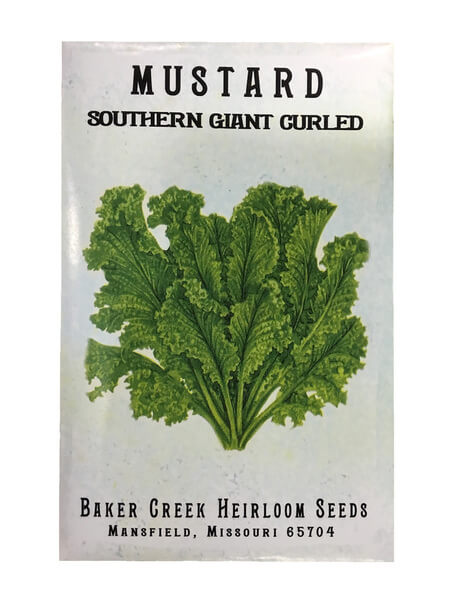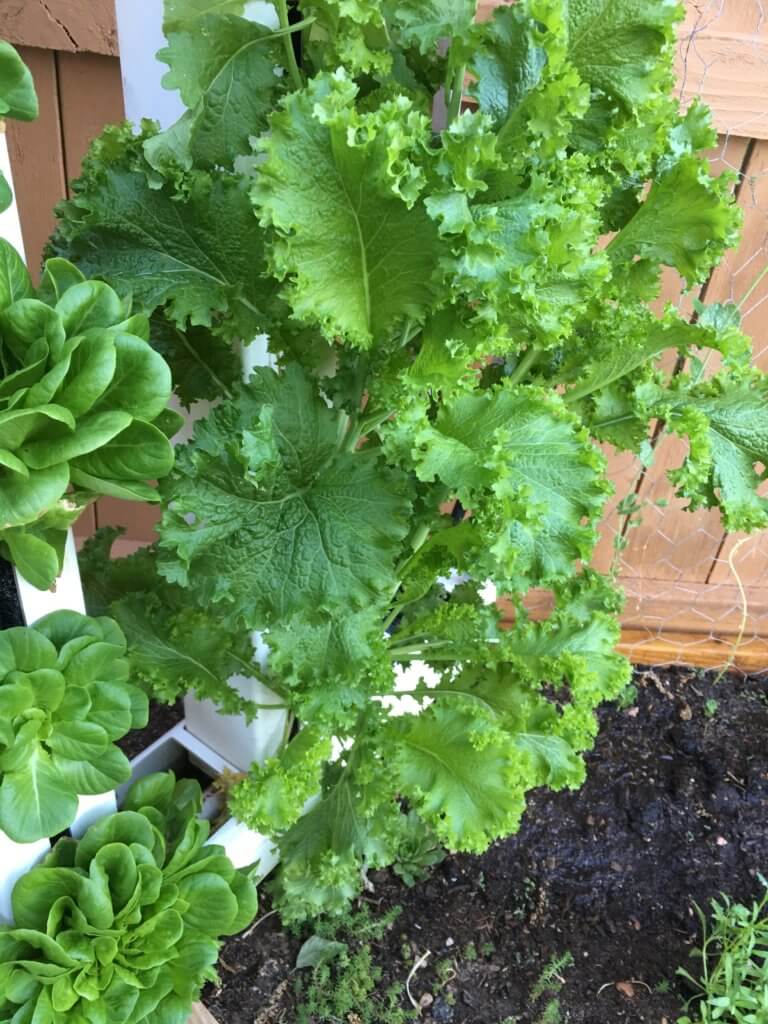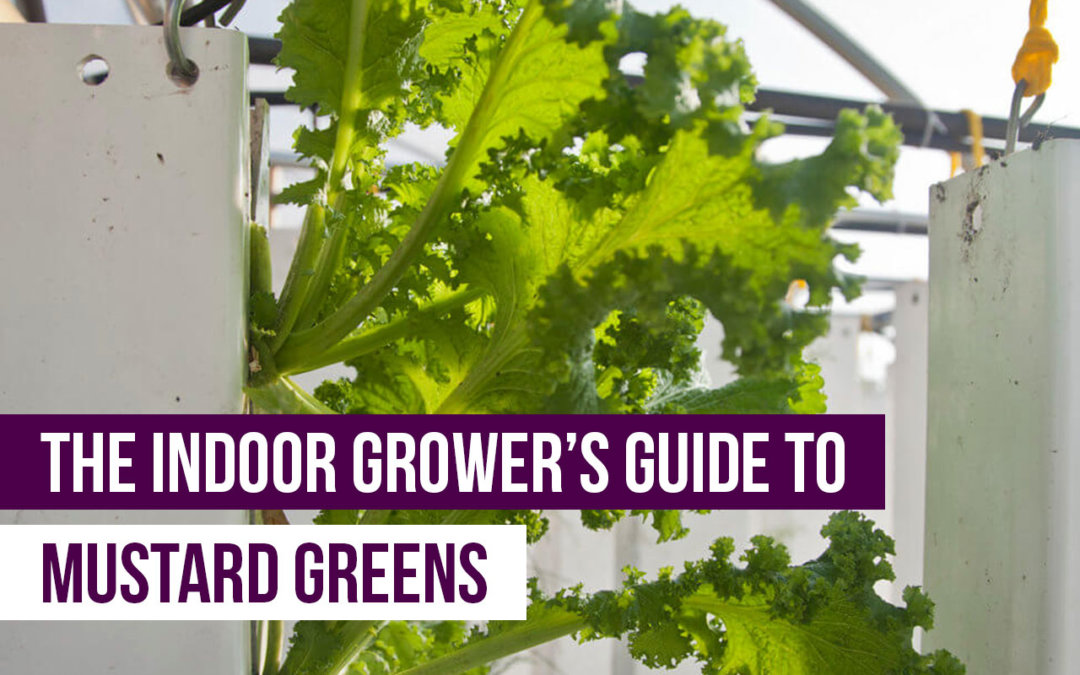Brassica juncea, or mustard greens, is another member of the brassica (a relative of kale and cabbage). Although its precise origins are unknown, there’s evidence that mustard is likely native to Eastern Europe and Asia, as is reflected by its common names—India mustard and China mustard. Here in the West we just call it “mustard greens.”
Why we like mustard greens
 The ruffled leaves of mustard taste similar to radishes and can add a spicy bite to a salad, sandwich, or can be eaten by themselves (usually steamed). Mustard is often cultivated for its seed, which is used in brown mustard (the condiment) and has been used for centuries in folk remedies for aches, arthritis, and even to promote cow milk production in some areas of the world.
The ruffled leaves of mustard taste similar to radishes and can add a spicy bite to a salad, sandwich, or can be eaten by themselves (usually steamed). Mustard is often cultivated for its seed, which is used in brown mustard (the condiment) and has been used for centuries in folk remedies for aches, arthritis, and even to promote cow milk production in some areas of the world.
One of our favorite mustard varieties is Southern Giant Curled, but many varieties have been bred with different flavors and in colors ranging from green to dark purple.
Although mustard greens aren’t the first thing that come to mind when you’re creating a weekly menu, they are a great addition to spruce up a dish that is lacking in flavor. The strong taste of mustard makes it most useful to home cooks in small quantities. Selling mustard greens in large quantities will prove difficult. (Try suggesting a few recipes to interested customers to help them use their mustard greens!)
Ideal conditions for growing mustard greens
- pH range: 6.0–7.5
- EC/PPM: 1.2–2.4
- Temperature: 50–75º F
Mustard is another crop which is easy to grow, and a favorite with the Upstart Farmers. Mustard will grow almost anywhere using any technique, and although it will survive down to 35º F, it’s not as frost tolerant as some of its cousins.
When grown outside and/or in the soil, mustard greens can have issues with cabbage loopers, flea beetles, cabbage worms, and clubroot. Grown vertically and/or in healthy hydroponics systems, this is not likely.

Yield and pricing
Mustard greens can be managed similar to kale—grown from seeds, which take 4–7 days to germinate. The seedlings will be ready to transplant 2–3 weeks later (at 3–4 weeks from the seed planting). After 4–6 weeks growing, growers can harvest the greens partially (recommended), taking only 30% of the plant and leaving the rest to continue to grow. We’ve experienced yields of 3.1 lbs per 5-foot ZipGrow Tower this way, although light and nutrients impact that number.
Pricing for mustard greens varies widely by market, quality, and value points, but most Upstart Farmers are getting pricing at $5.00–6.00 per pound.
Think you might have a market for mustard?
Finding markets might sound intimidating, but it really comes down to understanding the market and a bit of hard work. There are four main markets that Upstart Farmers are exceptionally positioned to enter: restaurants, farmer’s markets, grocery stores, and CSAs.
Believe it or not, you do have unique value to offer those markets. Want to learn more about the markets and what you have to offer them? Take the 4 Markets course here on Upstart University.




Possible d’utiliser le POLYTER ? Pour plus de résultats !
Moi je suis au Togo
Hello—
Polyter is generally intended for soil applications, we have not seen anyone use it in hydroponics.
I want to do my research on mustard I need your help thank you
Marvelous, what a website it is! This webpage presents helpful facts to
us, keep it up.